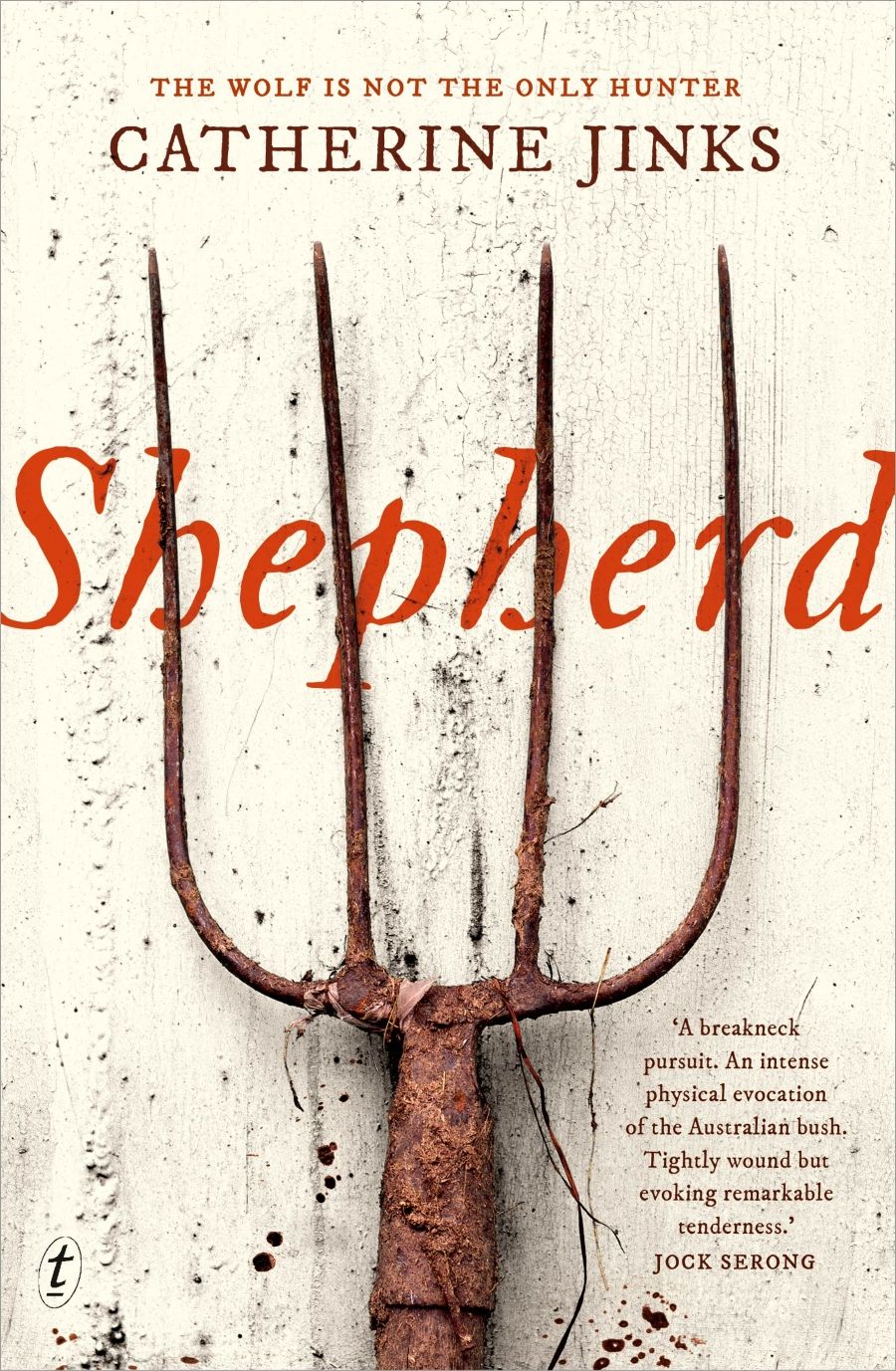
- Free Article: No
- Contents Category: Fiction
- Review Article: Yes
- Online Only: No
- Custom Highlight Text:
One of the few advantages a contemporary writer of historical fiction has derives from working in a context with laxer censorship laws. Representations of sexuality and violence once proscribed can be incorporated to better approach the social conditions of the period. With regard to narratives about Australia’s convict history ...
- Grid Image (300px * 250px):

- Alt Tag (Grid Image): David Whish-Wilson reviews 'Shepherd' by Catherine Jinks
- Book 1 Title: Shepherd
- Book 1 Biblio: Text Publishing, $29.99 pb, 226 pp, 9781925773835
Set in 1840 New South Wales, Shepherd ’s first-person narrator is fourteen-year-old convict Tom Clay, transported for poaching in his native Suffolk. While we are immediately introduced to the novel’s principal antagonist, the brutal absconder Dan Carver, notable for his absence from the early scenes but a strong presence in the aroused fears of Tom and hutkeeper Joe Humble, it is Tom’s previous occupation as a poacher that is key to his reading of the new country and ultimately to his survival once the chase intensifies.
Jinks’s writing is clear and spare, skilfully utilising period diction, slang, and the evocative names of things to draw a picture of Tom’s vulnerability as a shepherd on a remote frontier, while also suggesting the traits that will hold him in good stead in this new and alien country. Tom is clear-minded and resourceful, having suffered the early loss of his mother and father back in the old country, but it is his affinity with animals and his trained instincts for observation and quiet reflection that give him an edge over his fellow Europeans, who are universally ignorant of, and dismissive toward, the land and the people they have occupied. Tom Clay is a beautifully rendered character, as is his inseparable dog, Gyp. Tom knows the names of each of his sheep; he is curious about the natural world around him and the fleeting presences and haunting traces of the Aboriginal people who have learned from bitter experience to avoid deliberate contact with the settlers. It is in Tom’s observations of the natural world that Jinks’s descriptive talents come to the fore, where, for example, ‘sheep spill from the bush like a foamy tide’. Tom might be fourteen, he might feel as though he’s ‘lost in this place as I would be in the middle of London’, so that ‘[e]very step I take, the earth feels strange to me. I wish I had someone to teach me what I need to know,’ but he is also wise enough to ask himself, ‘How can anyone live in a place without knowing it?’
It is the mysterious arrival of a new man, Rowdy Cavanagh, extrovert to Tom’s introvert, that changes everything. Rowdy’s appearance is the precursor to the return of the vicious Dan Carver. While Carver’s propensity for violence towards Aboriginal people has been hitherto exploited by the freeborn landowner, Mr Barrett, when Carver turns on his own kind and murders two whites, a subsequent incident between Carver and Tom results in an oath of bloody revenge. Out there in the bush, an absconder and outlaw, wounded and aggrieved, the malevolent Carver haunts Tom’s dreams.
When Carver finally returns, Tom and new chum Rowdy set off to warn the others, with Carver in hot pursuit. The tension ratchets up and never dissipates, although Tom has some advantages. He might be the hunted in this situation, but his experience as a hunter allows him to read the country for clues, even while Rowdy is completely out of his depth. It is Tom, for example, who points out to him the direction they need to take based on his observation that in the Great Southern Land ‘moss grows on the south side of trees’. It is a mark of Tom’s character, and his willingness to learn and adapt, that, as the chase intensifies, his earlier feelings of ‘distance’ from the new world diminish as his senses are sharpened by fear, necessity, and the reawakening of the skills taught to him as a child. This beginning to see things clearly has immediate practical benefits for Tom and Rowdy, but its metaphorical slant is also worthy of recognition – the coming into an outsider’s consciousness of a new respect for the land and her Aboriginal peoples, manifesting as a first tugging sense of belonging.


Comments powered by CComment